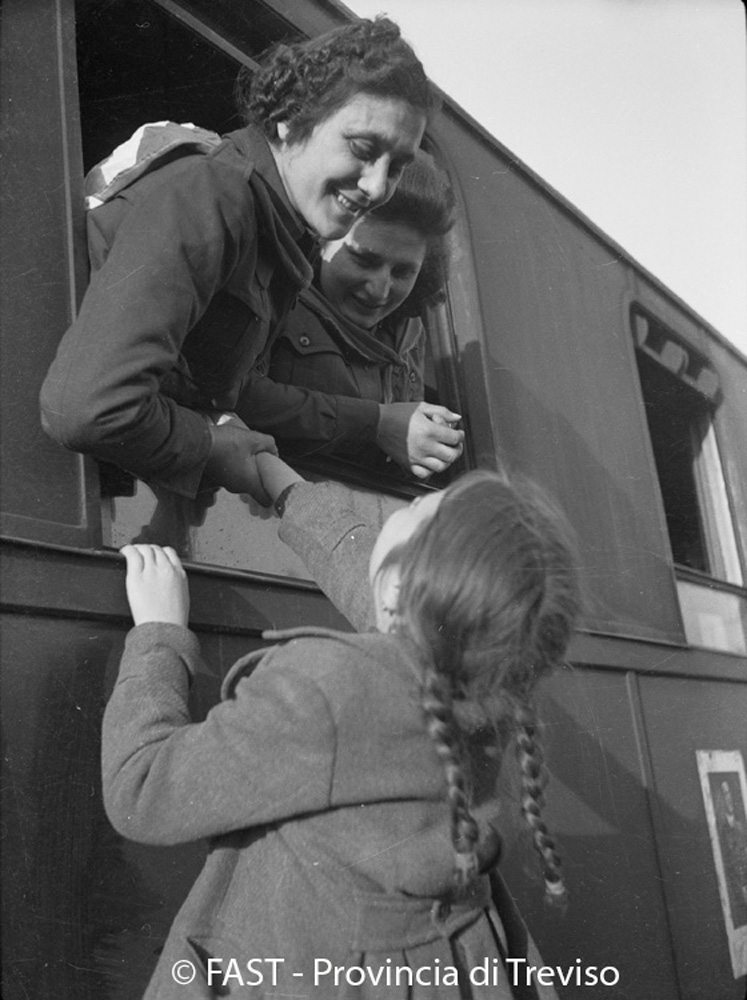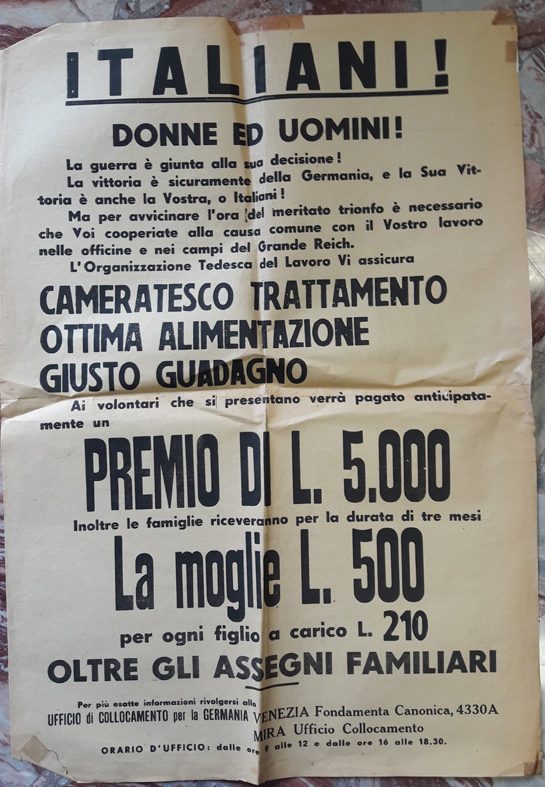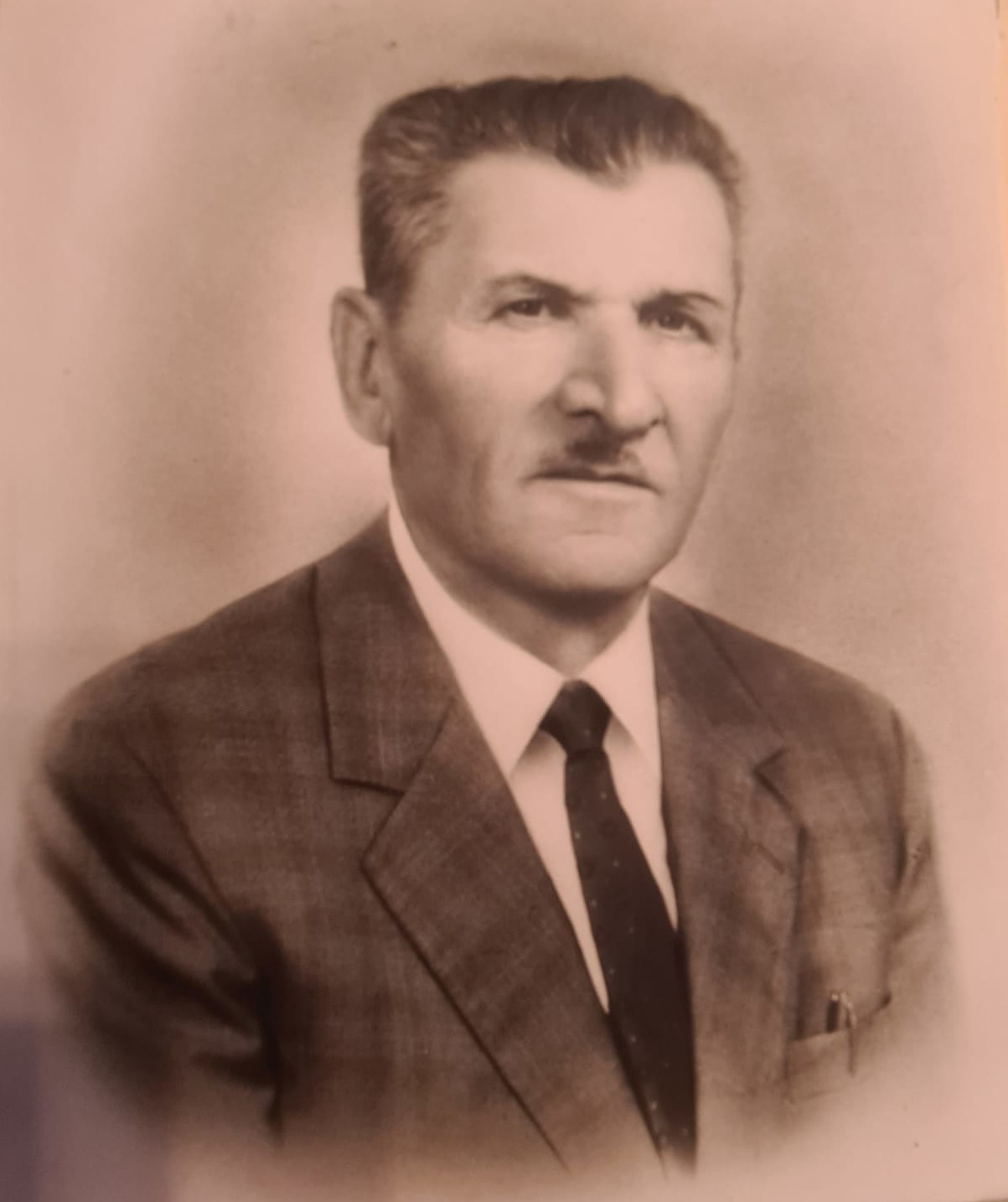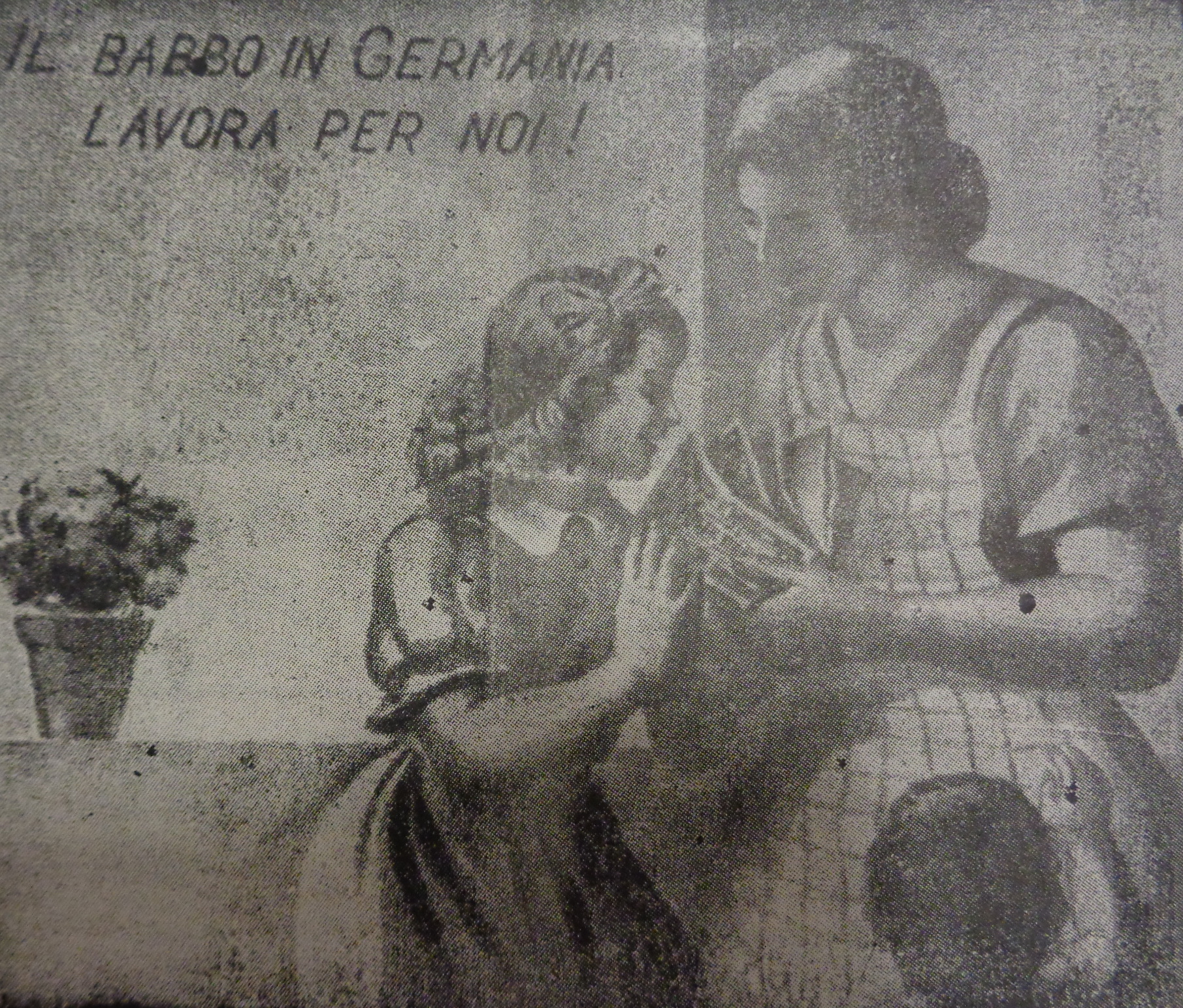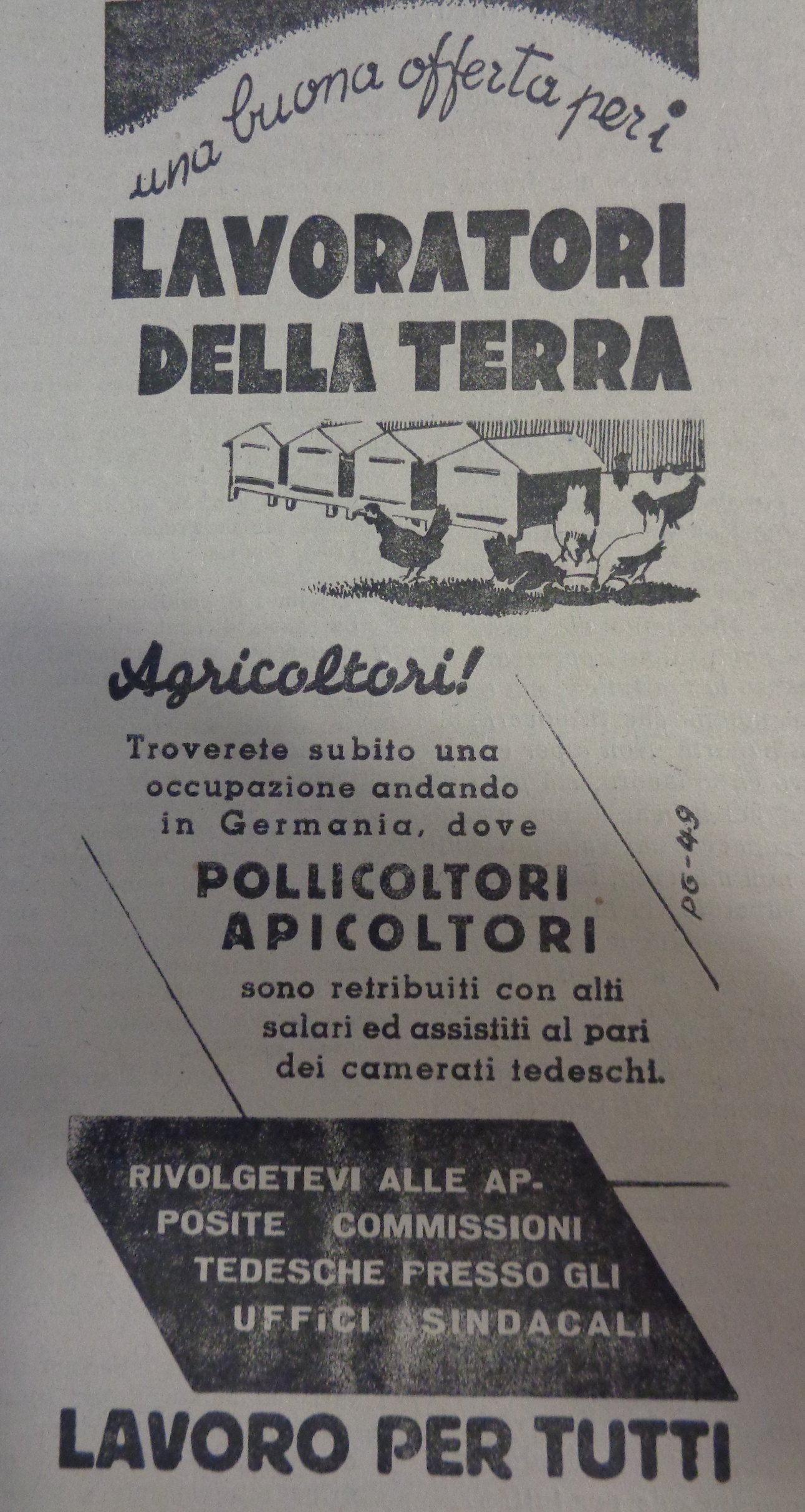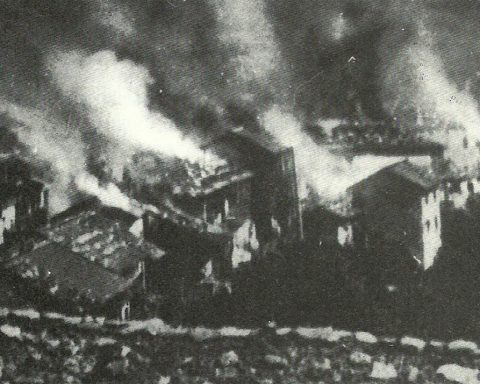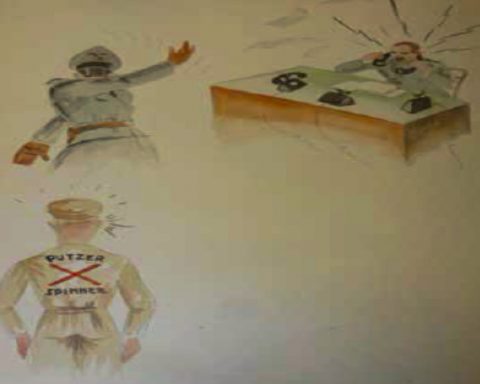Following the Ordinance issued by Hitler on 10 September 1943, which divided Italy into “operations zones and the remaining occupied territory”, the provinces of Trento, Bolzano and Belluno – from which the municipalities of Cortina d’Ampezzo, Livinallongo del Col di Lana and Colle Santa Lucia were transferred to the jurisdiction of Bolzano – became part of the Operationszone Alpenvorland (Prealps Operations Zone, OZAV).
The governor of Tyrol, Franz Hofer, was appointed Supreme Commissioner, and was determined to reunify the ancient county of Tyrol divided between Italy and the Reich.
In this scenario, already envisaged under the “Options”, which had begun in 1939 and gave German-speaking South Tyroleans the possibility of leaving Italy to move to the territories of the Reich, the question of forced labour became crucial.
The need to replace workers who had moved away, on the one hand, and to restore repeatedly bombed roads and railway lines, on the other, led to the massive recruitment of manpower, especially from the province of Belluno, assigned to Bolzano, Innsbruck and Landek, as well as from Eastern Europe. This recruitment was initially carried out on a voluntary basis, later through conscription.
From the spring of 1944 onwards, when the reluctance to apply for jobs in Germany spread, and at the same time the partisan struggle intensified, the dragnets and roundups, carried out systematically in the Belluno area, often provided forced labour, this time for German industries. In addition to this, hundreds of men in the province were employed by Organisation Todt in the construction of an impressive anti-aircraft defence and protection system.
Thus it was that the concentration camp of Bolzano, which became operational on 15 May 1944 as a labour re-education camp (Arbeitserziehungslager), in August the following year became a transit and police camp (Polizei – und Durchgangslager) where the fates of those sent to the labour camps in the satellite facilities, those sent to labour camps in the Reich, and those to the KL, diversified.
by Adriana Lotto, Antonella Tiburzi and Costantino di Sante
